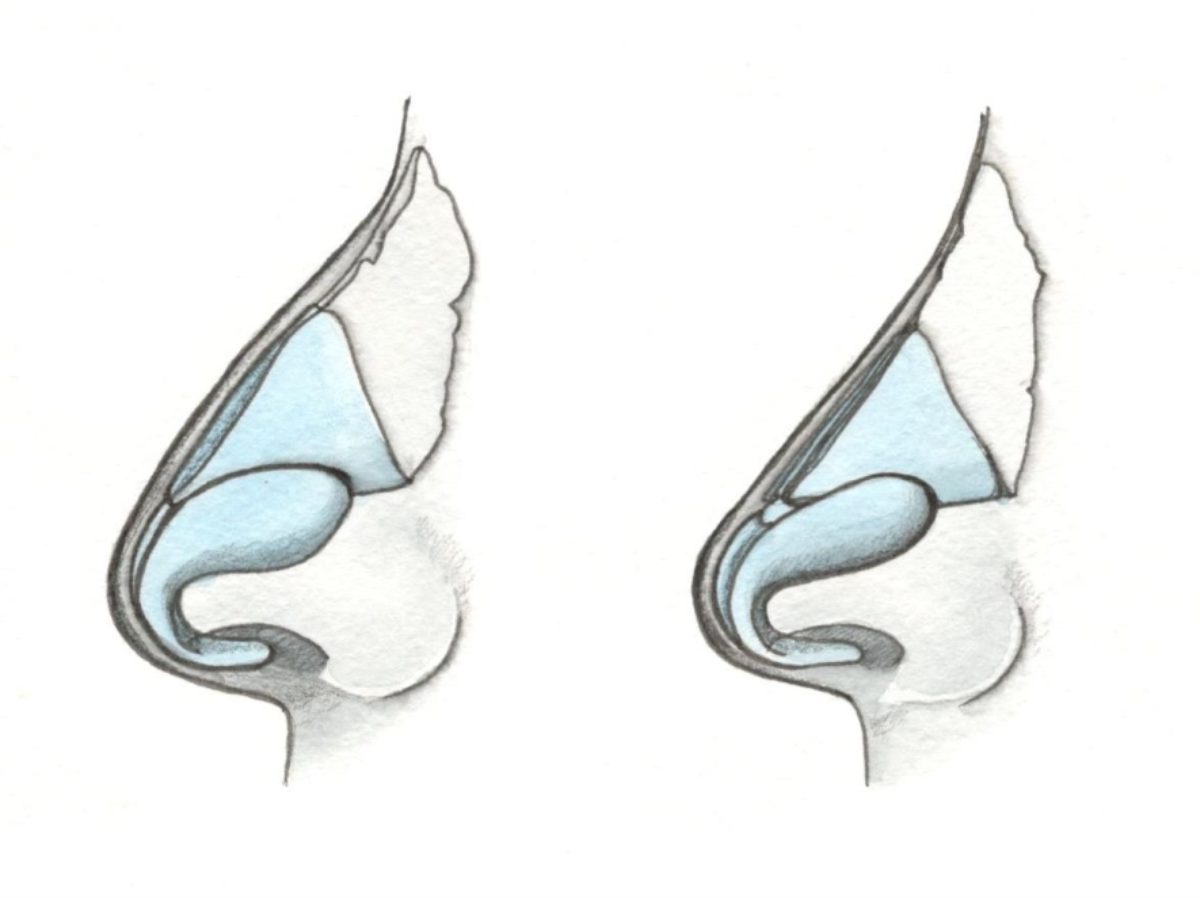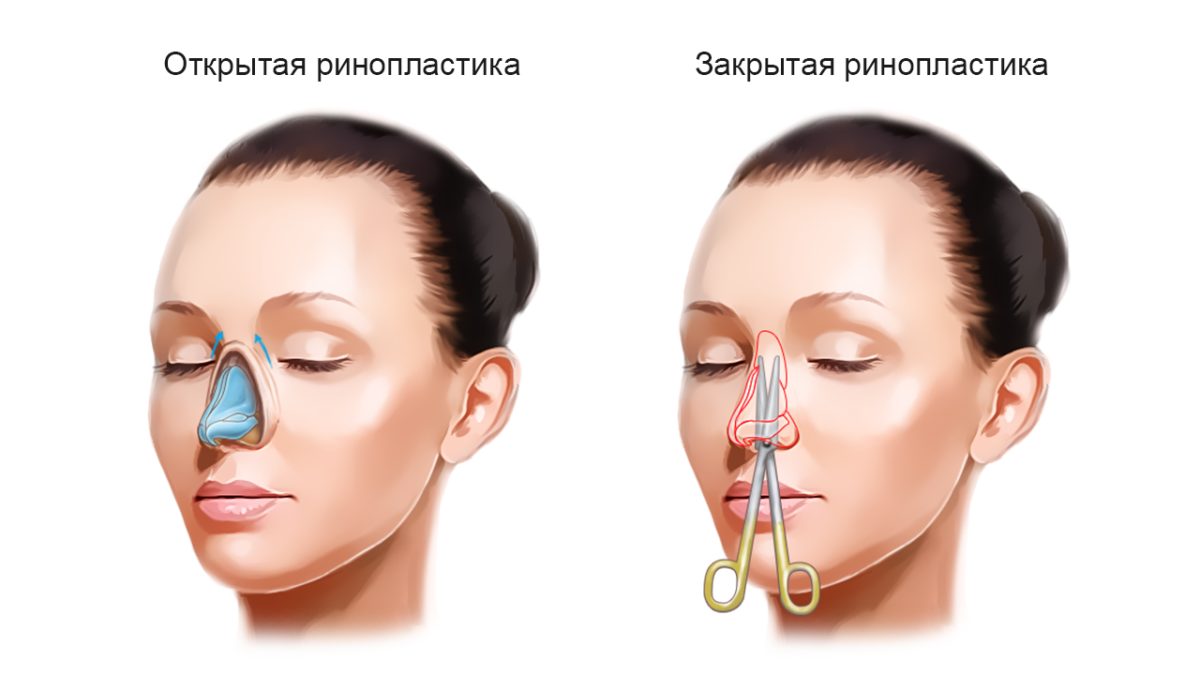Rhinoplasty
Rhinoplasty is a surgical operation completely or partially changing the shape and size of nose as well as solving nasal breathing problems. Such a surgery is performed both for aesthetic and medical reasons.
RHINOPLASTY TASKS
• Removing the bump
• Changing nose tip shape
• Changing nose wing shape
• Changing nose size (making it smaller/bigger)
• Straightening curved nose (cartilage or bone)
• Correcting cleft nose (with congenital deformities of the hare lip type)
• Correcting low nasal bridge (saddle nose)
• Drooping nose
• Correcting congenital deformities of the nose and/or the consequences of injuries.

◾ At LANTSET, we use a complex approach to surgeries. Otolaryngologist and plastic surgeons’ good team-work allows us to solve the entire range of these tasks. An otolaryngologist thoroughly examines how well the nose works and the condition of its paranasal sinuses, treats the detected pathology, and a plastic surgeon corrects the nose shape at your request. Important notice! Rhinoplasty is available to people 16+ when nose cartilage tissues are fully formed and grown.
TYPES OF ACCESS
During rhinoplasty, the access to internal structures of the nose can be either closed (through incisions on the inner sides of the nostrils) or open (a combination of an internal incision with an incision along the columella, a strip of skin between the nostrils).
The surgeon chooses the access type before the operation, taking into account the patient’s specifics and tasks at hand.
POST-SURGERY APPEARANCE
◾ A plaster or plastic splint protecting against injury and hindering post-operational swelling is applied to the nose. It is removed in seven to nine days. A week after the operation, sutures will also be removed (if any). Hemorrhages around the eyes are usually light and disappear within two weeks.
◾ You may feel minor pain and will have swelling for several days, which may sometimes hinder nasal breathing. You can see the result of rhinoplasty when the swelling goes away.
◾ For three weeks, you should avoid sports, sauna, and swimming pool. If you use glasses, do not wear them for three weeks after the surgery.
◾ Usually, it takes three months to fully rehabilitate after the primary rhinoplasty. After repeated operations and complex reconstructions, it takes much longer, up to a year.
PREOPERATIONAL PREPARATION
Personal manager. When a patient comes to the clinic, they get a personal plastic surgery manager. The manager supervises the patient from the moment of consultation with the doctor up until the operation: supports the patient during pretreatment for the operation, prepares all the necessary documents, solves issues about the preoperational period.
All in one place. All laboratory and clinical investigations as well as necessary consultations of specialist doctors take one or two days in the LANTSET clinic for the patient to complete.
On the appointed operation day, the patient comes to the inpatient unit of the clinic and is accommodated in a comfortable VIP ward. After the operation, the patient stays in the inpatient unit of the clinic for one or two days monitored by medical professionals. Upon discharge, the patient receives a discharge report with the dates and times of examinations, bandaging, and suture removal.
CONTRAINDICATIONS
The main contraindications to surgery include:
• Pregnancy and breastfeeding
• Beginning of the menstrual cycle (women)
• Malignant neoplastic process irrespective of its location
• Lower blood coagulability due to a genetic pathology or systematic use of anticoagulants
• Connective tissue diseases (scleroderma, systemic lupus erythematosus)
• High blood pressure
• Diabetes mellitus (decompensation stage)
• Diabetic angiopathy, diabetic retinopathy
• Thyroid pathology with disfunction (hypothyroidism, hyperthyroidism)
• Tuberculosis, other chronic infectious diseases
• Medical history with acute vascular events (stroke, heart attack)
• Internal organ chronic disease exacerbation
To determine whether a patient has any contraindications to surgery, a medical preoperational testing is prescribed.
To get a consultation with a plastic surgeon, call 8 800 500 02 03 or contact us via the feedback form.
Examples of works Зеленина Вадима Николаевича and Зеленина Николая Вадимовича